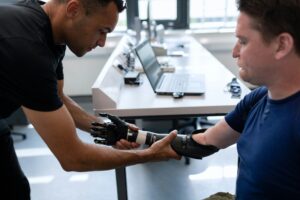The pursuit of a medical degree is a formidable undertaking, requiring years of dedication, intellectual rigor, and clinical training. Aspiring doctors around the world navigate a myriad of educational pathways, each with its unique challenges and opportunities. Among these pathways, medical education in Europe has garnered attention for its perceived differences in structure, curriculum, and rigor. In this extensive article, we delve into the question: Is medical school easier in Europe? By examining the intricacies of medical education across European countries, we aim to debunk common myths and shed light on the complexity of this multifaceted issue.
Understanding Medical Education in Europe
-
Integrated Undergraduate Programs
One distinguishing feature of medical education in Europe is the prevalence of integrated undergraduate programs. In countries such as the United Kingdom, Germany, and Italy, medical students enter six-year programs directly after secondary school, combining foundational science courses with clinical training. This integrated approach aims to provide a seamless transition from theory to practice and foster early clinical exposure.
-
Variability Across Countries
It’s essential to recognize that medical education varies significantly across European countries, reflecting cultural, historical, and institutional differences. While some countries follow a traditional six-year undergraduate model, others, like Sweden and Finland, offer longer programs that include additional research components or elective rotations. Moreover, the structure and content of medical curricula may differ, with some countries placing greater emphasis on certain specialties or clinical skills.
-
Emphasis on Competency-Based Learning
European medical education often emphasizes competency-based learning, focusing on the acquisition of core clinical skills and competencies essential for medical practice. Instead of relying solely on standardized examinations, European programs may incorporate continuous assessment methods, objective structured clinical examinations (OSCEs), and workplace-based assessments to evaluate student performance and progress.
Examining Factors Influencing Perceptions of Difficulty
-
Integration of Basic and Clinical Sciences
One factor contributing to the perception of medical school being easier in Europe is the integration of basic and clinical sciences early in the curriculum. By providing hands-on clinical experiences from the outset, European programs may facilitate a deeper understanding of medical concepts and enhance clinical reasoning skills, potentially easing the transition to clinical practice.
-
Structured Training Pathways
European medical programs often offer structured training pathways with clear progression criteria and milestones. This structured approach may provide students with a sense of direction and clarity, reducing uncertainty and anxiety associated with navigating the medical education journey.
-
Cultural and Societal Factors
Cultural attitudes towards education, healthcare, and work-life balance may also influence perceptions of medical school difficulty. In some European countries, there may be less emphasis on high-stakes examinations and academic competition, fostering a more collaborative and supportive learning environment. Additionally, societal factors such as access to healthcare resources and social support networks may impact students’ experiences and perceptions of difficulty.
Challenges and Considerations in European Medical Education
-
Competitive Admission Processes
While European medical schools may offer integrated undergraduate programs, admission remains highly competitive, with limited spots available and stringent selection criteria. Aspiring doctors must demonstrate academic excellence, extracurricular involvement, and a genuine commitment to medicine to secure a place in these programs.
-
Intensive Clinical Training
Despite the perceived integration of basic and clinical sciences, European medical students still undergo rigorous clinical training, including clerkships, rotations, and supervised patient care experiences. The demands of clinical training can be physically, emotionally, and intellectually taxing, requiring students to adapt quickly to diverse clinical settings and patient populations.
-
Professional Licensing and Certification
Graduates of European medical programs must meet licensure and certification requirements to practice medicine in their respective countries. This process typically involves passing national licensing examinations, completing postgraduate training (residency), and meeting other regulatory requirements set forth by medical governing bodies.
Debunking Myths and Promoting Understanding
-
No One-Size-Fits-All Answer
It’s crucial to recognize that there is no one-size-fits-all answer to the question of whether medical school is easier in Europe. The perceived difficulty of medical education is subjective and influenced by a myriad of factors, including individual learning styles, personal circumstances, and cultural backgrounds.
-
Emphasizing Quality and Excellence
Regardless of geographical location, medical education aims to prepare students for the complexities and challenges of medical practice. While European medical schools may offer integrated programs and structured training pathways, they remain committed to upholding high standards of quality, excellence, and patient care.
-
Promoting Collaboration and Exchange
Instead of comparing the perceived difficulty of medical education in different regions, it is more constructive to promote collaboration and exchange between medical schools worldwide. By sharing best practices, innovations, and insights, educators can enhance the quality and effectiveness of medical education, ultimately benefiting students and patients alike.
Navigating the Complexities of Medical Education
In conclusion, the question of whether medical school is easier in Europe is multifaceted and nuanced. While European medical programs may offer integrated curricula, structured training pathways, and diverse learning environments, they are by no means less rigorous or demanding than their counterparts elsewhere. Medical education is inherently challenging, requiring dedication, resilience, and a lifelong commitment to learning and growth. By understanding the complexities of medical education in Europe and beyond, we can foster greater appreciation, collaboration, and dialogue within the global medical community, ultimately advancing the shared goal of improving healthcare for all.





